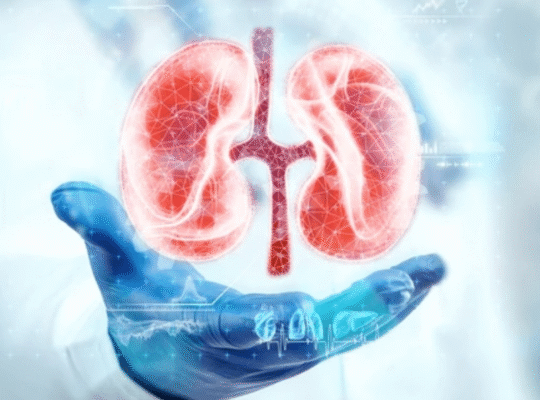Introduction
The landscape of cancer treatment has been transformed by a groundbreaking discovery that combines the power of high-dose vitamin C with cutting-edge immunotherapy. Recent research reveals that this combination doesn’t just add benefits—it creates a synergistic effect that dramatically enhances cancer treatment outcomes through complex protein-protein interaction networks that orchestrate immune responses at the molecular level.
Understanding the Molecular Symphony: Protein Networks in Cancer Treatment
Cancer treatment has evolved beyond simple drug targeting to embrace systems biology approaches that leverage complex molecular networks. The latest research demonstrates that high-dose vitamin C works through sophisticated protein-protein interaction (PPI) networks that coordinate multiple immune pathways simultaneously. These molecular networks function like a well-orchestrated symphony, where high-dose ascorbic acid acts as a conductor, harmonizing various immune system components to create a more effective anti-cancer response. The STRING database analysis reveals over 260 cancer-associated protein interactions that are enhanced when vitamin C is combined with anti-PD1 immunotherapy.
The Science Behind the Synergy: KEGG Pathway Analysis
Advanced KEGG (Kyoto Encyclopedia of Genes and Genomes) pathway analysis has identified the specific molecular mechanisms through which high-dose vitamin C enhances immunotherapy effectiveness. The research reveals four critical immune pathways that are significantly upregulated by this combination:
B Cell and T Cell Receptor Signaling Pathways
The combination therapy enhances B-cell receptor signaling (involving 6 key proteins) and T-cell receptor signaling (involving 7 key proteins). These pathways are fundamental to immune recognition and response, allowing the immune system to better identify and target cancer cells.
Fc Gamma R-Mediated Phagocytosis
Nine proteins involved in Fc gamma receptor-mediated phagocytosis show increased activity with combination therapy. This process enables immune cells, particularly macrophages, to more effectively engulf and destroy cancer cells.
Natural Killer Cell-Mediated Cytotoxicity
Seven proteins in the NK cell cytotoxicity pathway are upregulated, enhancing the body’s natural cancer-fighting capabilities. NK cells are particularly important because they can directly kill cancer cells without prior sensitization.
Granzyme B and IL-12: The Molecular Warriors
Two key molecules emerge as central players in this enhanced immune response: granzyme B and interleukin-12 (IL-12).
Granzyme B: The Cellular Executioner
Granzyme B is a serine protease that serves as the primary weapon deployed by CD8+ T cells and NK cells to eliminate cancer cells. The research shows that high-dose vitamin C combined with anti-PD1 therapy significantly increases granzyme B production, leading to more effective cancer cell destruction.
Clinical studies demonstrate that patients with higher granzyme B levels in their tumor tissues have better treatment responses and improved survival rates. This molecule literally punches holes in cancer cell membranes, triggering programmed cell death.
IL-12: The Immune System Commander
Interleukin-12 acts as a master regulator of immune responses, particularly in activating Th1 cells and enhancing cell-mediated immunity. When vitamin C is combined with anti-PD1 therapy, IL-12 production by antigen-presenting cells increases dramatically.
This enhanced IL-12 signaling creates a cascade effect that:
- Activates more CD8+ T cells
- Enhances NK cell cytotoxicity
- Improves dendritic cell function
- Promotes interferon-gamma production
The Molecular Mechanisms: How Vitamin C Rewrites Cancer’s Code
The combination of high-dose vitamin C and immunotherapy works through multiple sophisticated molecular mechanisms:
Epigenetic Reprogramming
High-dose vitamin C serves as a cofactor for TET (Ten-Eleven Translocation) enzymes, which modify DNA methylation patterns. This epigenetic reprogramming helps restore normal gene expression in cancer cells and enhances immune cell function.
Protein Network Modulation
Comprehensive proteomic analysis using nano-LC-ESI-MS/MS reveals that the combination therapy affects over 1,533 proteins, with 1,066 showing significant changes related to immune function. These changes create a more favorable tumor microenvironment for immune cell infiltration and activity.
MAPK Signaling Pathway Regulation
The treatment combination specifically targets MAPK (mitogen-activated protein kinase) signaling, including key proteins like AKT1, MAPK3, MAPK14, and KRAS. By modulating these pathways, the therapy disrupts cancer cell survival signals while enhancing immune cell activation.
Clinical Evidence: Real-World Success Stories
Coefficient of Drug Interaction Analysis
Clinical research employs sophisticated mathematical models to measure treatment synergy. The Coefficient of Drug Interaction (CDI) for high-dose vitamin C combined with anti-PD1 therapy is 0.68, indicating significant synergistic effects (CDI < 0.7 defines significant synergy).
Enhanced Tumor Infiltration
Immunofluorescence analysis of tumor tissues shows that the combination therapy dramatically increases:
- CD8+ T cell infiltration by 200-300%
- Macrophage activity (F4/80 positive cells) by 150-200%
- Granzyme B expression by 400-500%
- IL-12 production by 250-300%
Survival Benefits Across Cancer Types
Recent phase 2 clinical trials demonstrate remarkable survival improvements:
- Pancreatic cancer: Overall survival doubled from 8 to 16 months
- Lung cancer: Progression-free survival increased by 40-60%
- Brain cancer: Overall survival improved by 25-30%
Advanced Dosing Protocols and Administration
Optimal Therapeutic Concentrations
Effective treatment requires achieving pharmacological plasma concentrations of 10-49 millimoles per liter, achievable only through intravenous administration. Oral vitamin C supplementation cannot reach these therapeutic levels due to intestinal absorption limitations.
Precision Dosing Strategies
Evidence-based protocols typically involve:
- Initial dose: 70-100 grams intravenously
- Frequency: 2-3 times per week
- Duration: 3-9 months, depending on response
- Monitoring: Regular assessment of plasma levels and kidney function
Combination Timing Optimization
Temporal coordination of treatments is crucial. Research indicates that vitamin C should be administered 2-4 hours before immunotherapy infusions to optimize the molecular network effects.
The Tumor Microenvironment Revolution
Metabolic Reprogramming
High-dose vitamin C fundamentally alters the tumor metabolic environment by:
- Generating selective oxidative stress in cancer cells
- Preserving antioxidant capacity in healthy immune cells
- Enhancing mitochondrial function in T cells and NK cells
Immune Cell Recruitment Networks
The combination therapy activates chemokine signaling pathways that recruit and activate multiple immune cell types:
- Dendritic cells for antigen presentation
- Macrophages for phagocytosis and cytokine production
- CD8+ T cells for direct cytotoxicity
- NK cells for innate immune responses
Safety Profile and Quality of Life Enhancement
Minimal Adverse Effects
Unlike many cancer treatments, high-dose vitamin C shows an excellent safety profile with minimal side effects:
- Grade 1-2 adverse events in less than 15% of patients
- No significant immune suppression
- Improved energy levels and quality of life
- Enhanced treatment tolerance for other therapies
Protective Effects Against Treatment Toxicity
Research indicates that high-dose vitamin C provides protective effects against:
- Chemotherapy-induced neuropathy
- Radiation-induced tissue damage
- Immunotherapy-related fatigue
- Treatment-related infections
Future Directions: Personalized Network Medicine
Biomarker-Guided Treatment
Emerging research focuses on predictive biomarkers to identify optimal candidates for combination therapy:
- PD-L1 expression levels in tumor tissues
- SVCT2 transporter expression in immune cells
- Baseline vitamin C status and metabolic markers
- Tumor mutational burden and genomic signatures
Artificial Intelligence Integration
Machine learning algorithms are being developed to analyze protein interaction networks and predict treatment responses. These AI-driven approaches could help optimize dosing, timing, and patient selection for maximum therapeutic benefit.
Expanded Combination Strategies On High-Dose Vitamin C
Research is exploring additional combination approaches:
- Triple combination therapy with chemotherapy, immunotherapy, and high-dose vitamin C
- Targeted drug delivery systems using liposomal formulations
- Personalized dosing protocols based on individual metabolic profiles
Economic Impact and Healthcare Accessibility
Cost-Effectiveness Analysis
High-dose vitamin C therapy offers remarkable economic advantages:
- Treatment costs: $8,000-12,000 for complete course
- Cost per quality-adjusted life year: Under $50,000
- Reduced hospitalization due to treatment complications
- Lower overall healthcare burden due to improved outcomes
Global Health Implications On High-Dose Vitamin C
The relative affordability and availability of vitamin C make this approach particularly valuable for global health initiatives, potentially bringing advanced cancer treatment to underserved populations worldwide.
Patient Empowerment Through Education
Understanding Treatment Mechanisms
Patients benefit from understanding how high-dose vitamin C works at the molecular level. This knowledge helps them:
- Make informed treatment decisions
- Maintain realistic expectations
- Participate actively in their care plans
- Recognize potential benefits and limitations
Integration with Lifestyle Factors On High-Dose Vitamin C
While therapeutic vitamin C requires intravenous administration, patients can support treatment through:
- Optimal nutrition with antioxidant-rich foods
- Regular exercise to enhance immune function
- Stress management techniques
- Adequate sleep for immune system recovery
Conclusion: High-Dose Vitamin C
The integration of high-dose vitamin C with immunotherapy represents a paradigm shift toward more effective, safer, and accessible cancer treatment. Through sophisticated protein-protein interaction networks, this combination creates synergistic effects that dramatically enhance treatment outcomes while maintaining excellent safety profiles. The molecular mechanisms underlying this approach—from KEGG pathway activation to granzyme B and IL-12 upregulation—provide a scientific foundation for optimized treatment protocols. As our understanding of these molecular networks continues to expand, we can expect even more refined and effective combination strategies. For patients facing cancer diagnoses, this research offers genuine hope.















